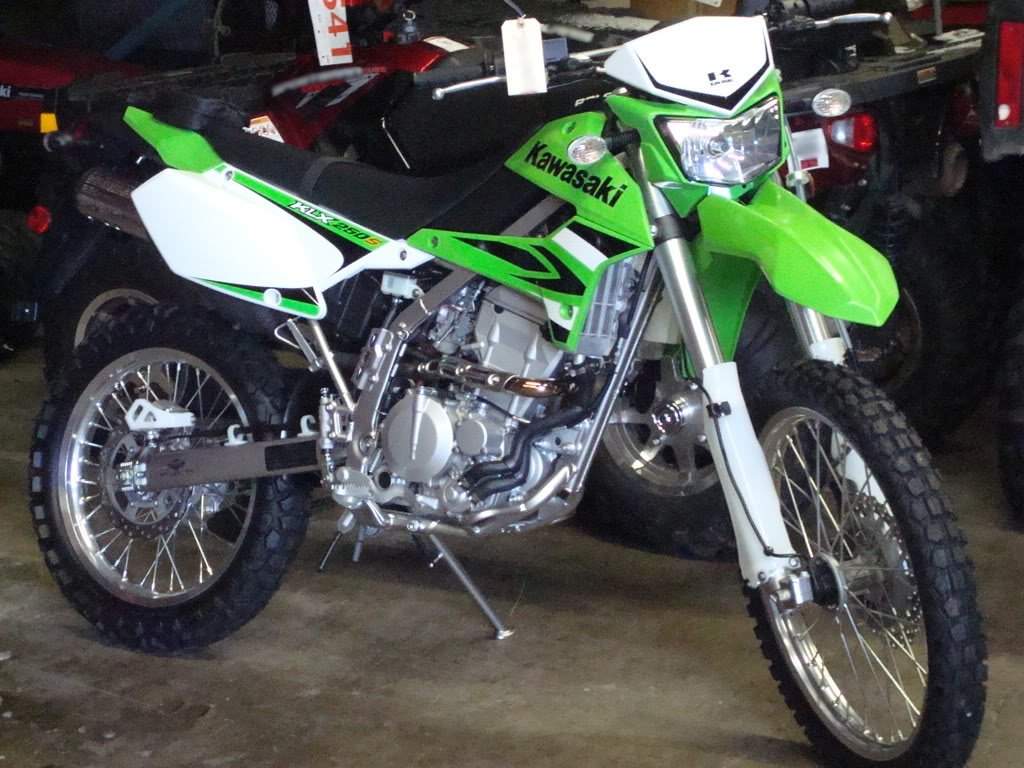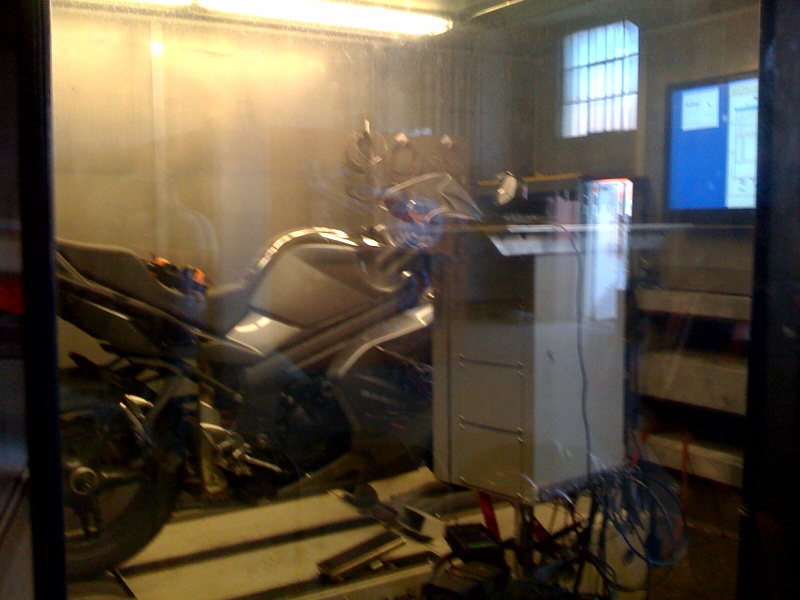|
KLR250
The Kawasaki KLR250/KL250D was a motorcycle produced from 1984 to 2005 as the successor to the 1978 to 1983 KL250C, with only minor changes during the model run. This lightweight dualsport motorcycle was used for several years by the US military for a variety of tasks, including messenger duty and reconnaissance. Development & Design It was produced by Kawasaki Heavy Industries in Japan and exported to many parts of the world, including the U.S. and Canada, Europe and Australia. The Chilean national police ("Carabineros de Chile") made extensive use of the KLR250. It is similar in appearance to the larger KLR650. The KLR250 shares many engine parts with an ATV sold by Kawasaki, the KSF250 "Mojave". In the USA the KLR250 was discontinued at the end of the 2005 model run and was replaced by the KLX250S in 2006. In other markets the KLX250 was introduced in 2001 and has been sold to the current day. Specifications The base specifications have remained virtually unchanged thro ... [...More Info...] [...Related Items...] OR: [Wikipedia] [Google] [Baidu] |
KLR250
The Kawasaki KLR250/KL250D was a motorcycle produced from 1984 to 2005 as the successor to the 1978 to 1983 KL250C, with only minor changes during the model run. This lightweight dualsport motorcycle was used for several years by the US military for a variety of tasks, including messenger duty and reconnaissance. Development & Design It was produced by Kawasaki Heavy Industries in Japan and exported to many parts of the world, including the U.S. and Canada, Europe and Australia. The Chilean national police ("Carabineros de Chile") made extensive use of the KLR250. It is similar in appearance to the larger KLR650. The KLR250 shares many engine parts with an ATV sold by Kawasaki, the KSF250 "Mojave". In the USA the KLR250 was discontinued at the end of the 2005 model run and was replaced by the KLX250S in 2006. In other markets the KLX250 was introduced in 2001 and has been sold to the current day. Specifications The base specifications have remained virtually unchanged thro ... [...More Info...] [...Related Items...] OR: [Wikipedia] [Google] [Baidu] |
Kawasaki KLX250S
The Kawasaki KLX250S is a Dual-sport motorcycle, dual-purpose motorcycle. In 2009, Kawasaki released their supermoto inspired KLX 250SF to the public. It is a relatively lightweight dual sport which can be used both on and off road. Its 249 cc engine has a top speed of 85 mph. First generation (2006-2007) Specifications Second generation (2009-2020) Specifications Differences from previous generation * All-digital instrument console * New, stiffer seat * New fender shape and headlight * Thicker spokes * Increased fuel capacity * New swing arm design * Less front and rear suspension travel * Slightly less ground clearance * Supermoto inspired KLX 250SF version available for 2009 and 2010 model years References {{DEFAULTSORT:Kawasaki Klx250s Kawasaki motorcycles, KLX250S Dual-sport motorcycles Motorcycles introduced in 2006 ... [...More Info...] [...Related Items...] OR: [Wikipedia] [Google] [Baidu] |
Dry Weight (motorcycle)
Motorcycle testing and measurement includes a range of more than two dozen statistics giving the specifications of the motorcycle, and the actual performance, expressed by such things as the output of the engine, and the top speed or acceleration of the motorcycle. Most parameters are uncontroversial and claims made by manufacturers are generally accepted without verification. These might include simple measurements like rake, trail, or wheelbase, or basic features, such as the type of brakes or ignition system. Other measurements are often doubted or subject to misunderstandings, and the motorcycling press serves as an independent check on sometimes unrealistic sales and marketing claims. Many of these numbers are subject to variable methods of measurements, or disagreement as to the definition of the statistic. The parameters most often in contention for motorcycles are the weight, the engine output (power and torque), and the overall performance, especially acceleration, top ... [...More Info...] [...Related Items...] OR: [Wikipedia] [Google] [Baidu] |
Motorcycle
A motorcycle (motorbike, bike, or trike (if three-wheeled)) is a two or three-wheeled motor vehicle steered by a handlebar. Motorcycle design varies greatly to suit a range of different purposes: long-distance travel, commuting, cruising, sport (including racing), and off-road riding. Motorcycling is riding a motorcycle and being involved in other related social activity such as joining a motorcycle club and attending motorcycle rallies. The 1885 Daimler Reitwagen made by Gottlieb Daimler and Wilhelm Maybach in Germany was the first internal combustion, petroleum-fueled motorcycle. In 1894, Hildebrand & Wolfmüller became the first series production motorcycle. Globally, motorcycles are comparably popular to cars as a method of transport. In 2021, approximately 58.6 million new motorcycles were sold around the world, fewer than the 66.7 million cars sold over the same period. In 2014, the three top motorcycle producers globally by volume were Honda (28%), Yamaha (17 ... [...More Info...] [...Related Items...] OR: [Wikipedia] [Google] [Baidu] |
Fuel Efficiency
Fuel efficiency is a form of thermal efficiency, meaning the ratio of effort to result of a process that converts chemical potential energy contained in a carrier (fuel) into kinetic energy or work. Overall fuel efficiency may vary per device, which in turn may vary per application, and this spectrum of variance is often illustrated as a continuous energy profile. Non-transportation applications, such as industry, benefit from increased fuel efficiency, especially fossil fuel power plants or industries dealing with combustion, such as ammonia production during the Haber process. In the context of transport, fuel economy is the energy efficiency of a particular vehicle, given as a ratio of distance traveled per unit of fuel consumed. It is dependent on several factors including engine efficiency, transmission design, and tire design. In most countries, using the metric system, fuel economy is stated as "fuel consumption" in liters per 100 kilometers (L/100 km) or kilometer ... [...More Info...] [...Related Items...] OR: [Wikipedia] [Google] [Baidu] |
Kawasaki Motorcycles
Kawasaki motorcycles are manufactured by the Motorcycle & Engine division of Kawasaki Heavy Industries. History Kawasaki Aircraft initially manufactured motorcycles under the Meguro name, having bought an ailing motorcycle manufacturer, Meguro Manufacturing with whom they had been in partnership. This eventually became Kawasaki Motor Sales. Some early motorcycles display an emblem with "Kawasaki Aircraft" on the fuel tank. During 1962, Kawasaki engineers were developing a four-stroke engine for small cars. Then some of the engineers transferred to the Meguro factory to work on the Meguro K1 and the SG, a single cylinder 250 cc OHV. In 1963, Kawasaki and Meguro merged to form Kawasaki Motorcycle Co.,Ltd. Kawasaki motorcycles from 1962 through 1967 used an emblem which can be described as a flag within a wing. Work continued on the Meguro K1, a copy of the BSA A7 500 cc vertical twin. and on the Kawasaki W1. The K2 was exported to the U.S. for a test in respons ... [...More Info...] [...Related Items...] OR: [Wikipedia] [Google] [Baidu] |
Dual-sport Motorcycles
A dual-sport motorcycle is a type of street-legal motorcycle that is designed for both on and off-road use. The terms ''all-road,'' ''on/off road,'' and ''dual-purpose'' are also used for this class of motorcycles. Dual-sports are equipped with street-legal equipment such as lights, speedometer, mirrors, horn, license plate mounting, and muffler and can, therefore, be registered and licensed. Evolution of dual-sports The concept of a versatile motorcycle equally at home on dirt and pavement is as old as motorcycling itself. Most roads were still unpaved when motorized bicycles first appeared around 1900. In a sense, all motorcycles at that time were dual-sports, intended to be used on dirt as well as pavement. Advertisements well into the 1920s depict motorcycles on dirt roads, raising clouds of dust. By 1940, most roads in developed countries were paved and motorcycles had become heavier and more oriented to the street. In the 1950s and 1960s British manufacturers such as Tr ... [...More Info...] [...Related Items...] OR: [Wikipedia] [Google] [Baidu] |




